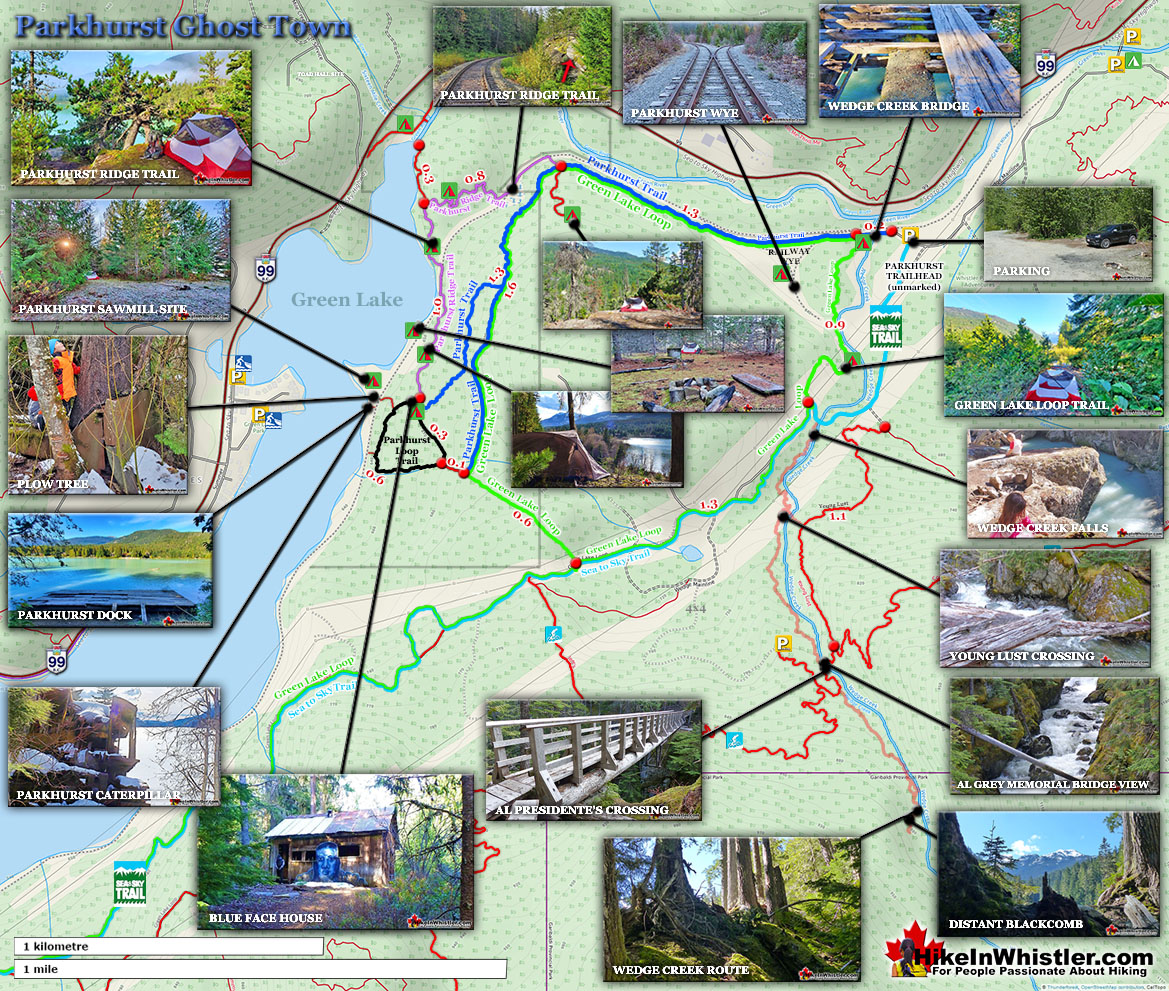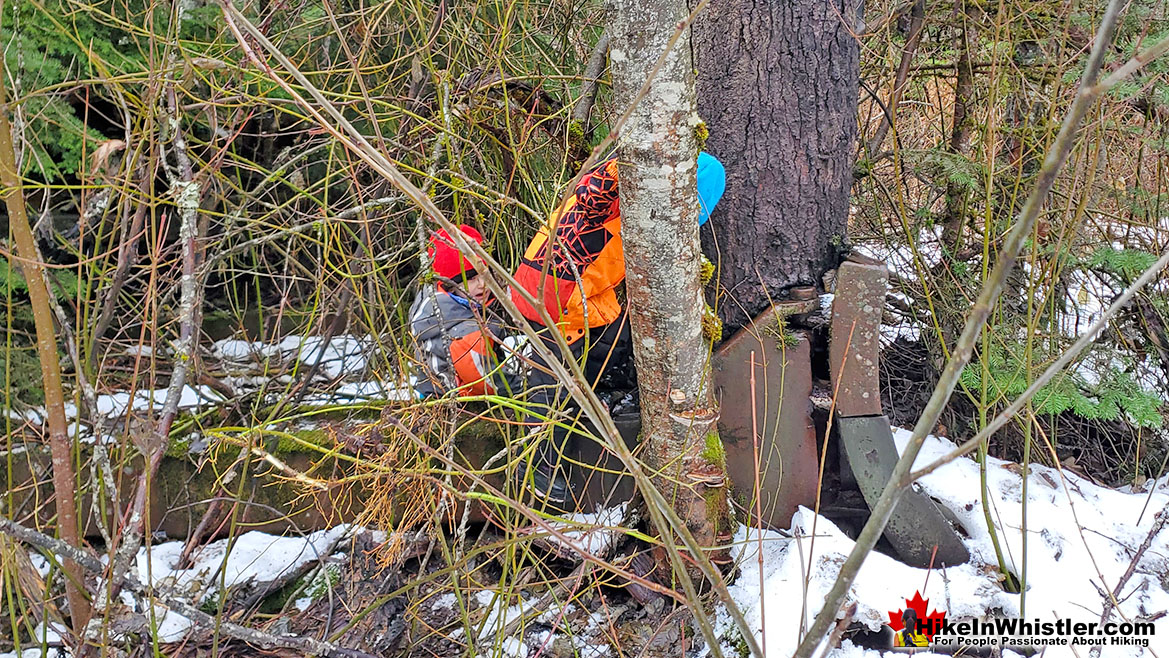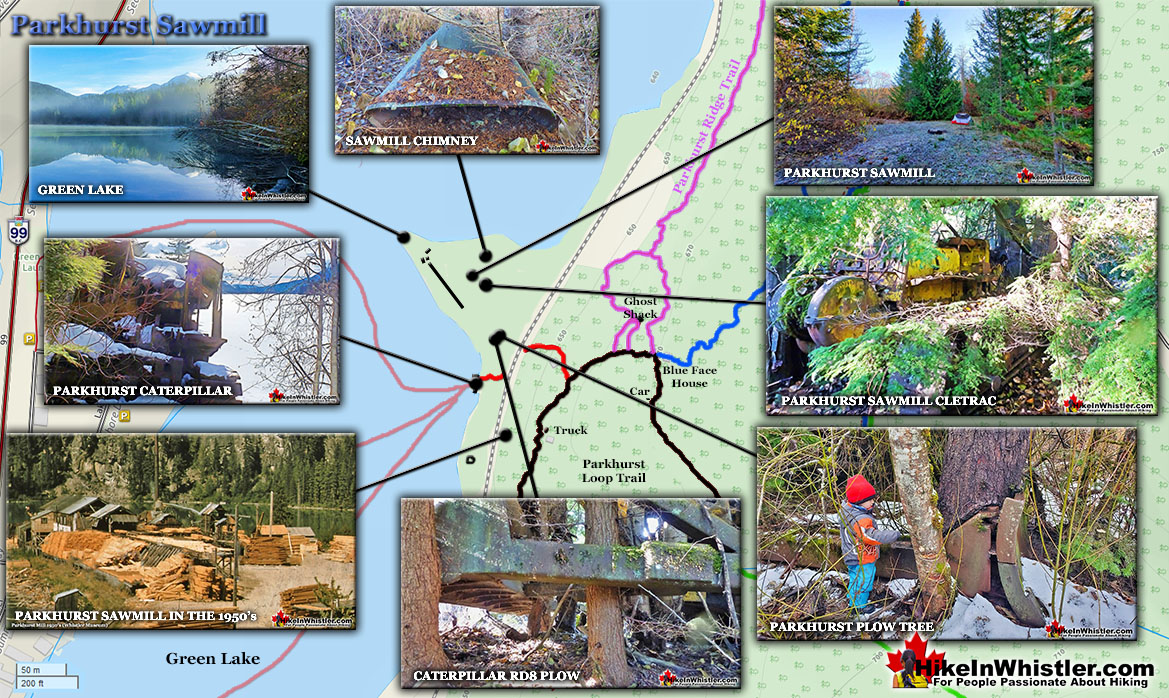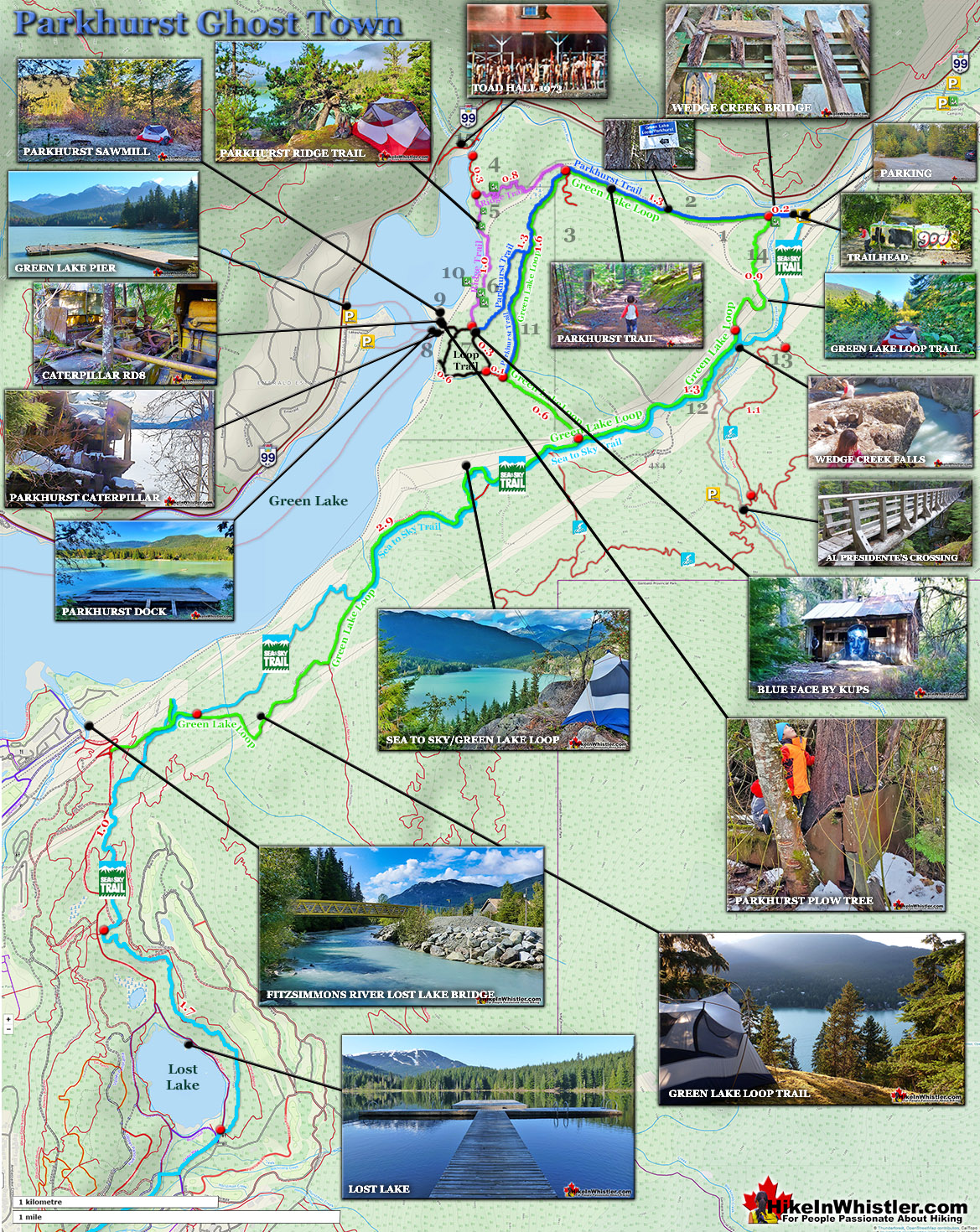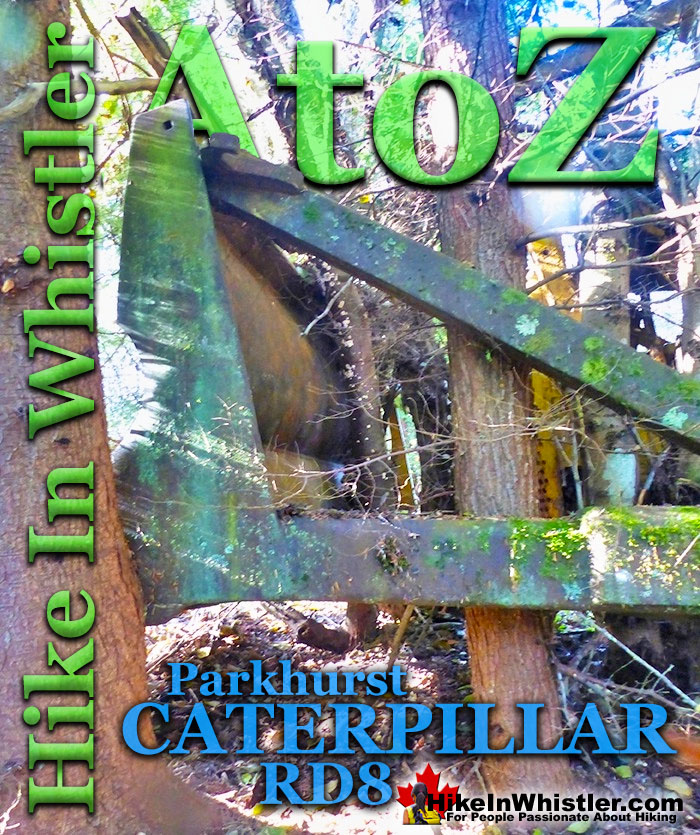
![]() The second Caterpillar tractor in Parkhurst Ghost Town is considerably harder to find despite being just a few metres from the hulking Caterpillar at the shore of Green Lake. If you bushwhack through the dense forest toward the point of land that the Parkhurst Sawmill was located you will find this second tractor also abandoned in 1956. This tractor is much easier to identify than the other one and appears to be a Caterpillar RD8 built in 1936.
The second Caterpillar tractor in Parkhurst Ghost Town is considerably harder to find despite being just a few metres from the hulking Caterpillar at the shore of Green Lake. If you bushwhack through the dense forest toward the point of land that the Parkhurst Sawmill was located you will find this second tractor also abandoned in 1956. This tractor is much easier to identify than the other one and appears to be a Caterpillar RD8 built in 1936.
Whistler & Garibaldi Hiking
![]() Alexander Falls
Alexander Falls ![]() Ancient Cedars
Ancient Cedars ![]() Black Tusk
Black Tusk ![]() Blackcomb Mountain
Blackcomb Mountain ![]() Brandywine Falls
Brandywine Falls ![]() Brandywine Meadows
Brandywine Meadows ![]() Brew Lake
Brew Lake ![]() Callaghan Lake
Callaghan Lake ![]() Cheakamus Lake
Cheakamus Lake ![]() Cheakamus River
Cheakamus River ![]() Cirque Lake
Cirque Lake ![]() Flank Trail
Flank Trail ![]() Garibaldi Lake
Garibaldi Lake ![]() Garibaldi Park
Garibaldi Park ![]() Helm Creek
Helm Creek ![]() Jane Lakes
Jane Lakes ![]() Joffre Lakes
Joffre Lakes ![]() Keyhole Hot Springs
Keyhole Hot Springs ![]() Logger’s Lake
Logger’s Lake ![]() Madeley Lake
Madeley Lake ![]() Meager Hot Springs
Meager Hot Springs ![]() Nairn Falls
Nairn Falls ![]() Newt Lake
Newt Lake ![]() Panorama Ridge
Panorama Ridge ![]() Parkhurst Ghost Town
Parkhurst Ghost Town ![]() Rainbow Falls
Rainbow Falls ![]() Rainbow Lake
Rainbow Lake ![]() Ring Lake
Ring Lake ![]() Russet Lake
Russet Lake ![]() Sea to Sky Trail
Sea to Sky Trail ![]() Skookumchuck Hot Springs
Skookumchuck Hot Springs ![]() Sloquet Hot Springs
Sloquet Hot Springs ![]() Sproatt East
Sproatt East ![]() Sproatt West
Sproatt West ![]() Taylor Meadows
Taylor Meadows ![]() Train Wreck
Train Wreck ![]() Wedgemount Lake
Wedgemount Lake ![]() Whistler Mountain
Whistler Mountain
![]() January
January ![]() February
February ![]() March
March ![]() April
April ![]() May
May ![]() June
June ![]() July
July ![]() August
August ![]() September
September ![]() October
October ![]() November
November ![]() December
December
Caterpillar made just 9999 1H series RD8 and D8 Caterpillars from 1935 to 1941 and this one was one of the early RD8's at number 334. In 1937, a year after this one came off the assembly line Caterpillar dropped the 'R' from the RD8 name and continued the line as D8. The other Parkhurst Caterpillar, just a few metres away on the shore of Green Lake is a D8 of the same 1H series, and was built in 1939. The Caterpillar RD8 tractor was hugely popular and became renowned worldwide after their widespread use by the Allies during World War II. This Caterpillar at Parkhurst is so hidden by the forest that even standing a couple metres from it you can barely see it. Even in winter when the surrounding trees and bushes have shed their leaves, you still have to get fairly close to spot it. Considering the age of this tractor and that it has been sitting in this spot through 65 winters, it is remarkably intact. It sits in the forest with its massive 4 ton plow stretching out in front of it. Consumed by the forest, the enormous plow is being lifted off the forest floor by several trees. Still attached to the 36,500 pound tractor the huge old steel plow weighs well over 8,000 pounds and yet this plow, squeezed by several growing trees, has been lifted off the ground about 40 centimetres. One tree at the edge of the plow seems to be straining against much of the plow's weight as its thick, muscular trunk bends away from the plow a few centimetres before rising straight up into the forest canopy. Climbing inside this old Cat RD8, the steel steering control levers and gas, brake and clutch pedals are all nearly as they would have been in 1956.
Sitting in the driver's seat on the now bare, corroded metal and looking over the confusing array of control levers, trying to picture the day it was left here. A decade before Whistler began its transformation into a resort and it must have felt like the valley would almost entirely empty. For the last thirty years the logging activity at the mill would shut every winter and the town emptied. Interesting to think that soon the seasonal popularity of the valley would reverse and people packing into the town in the winter and leaving in the spring when the ski season ended.
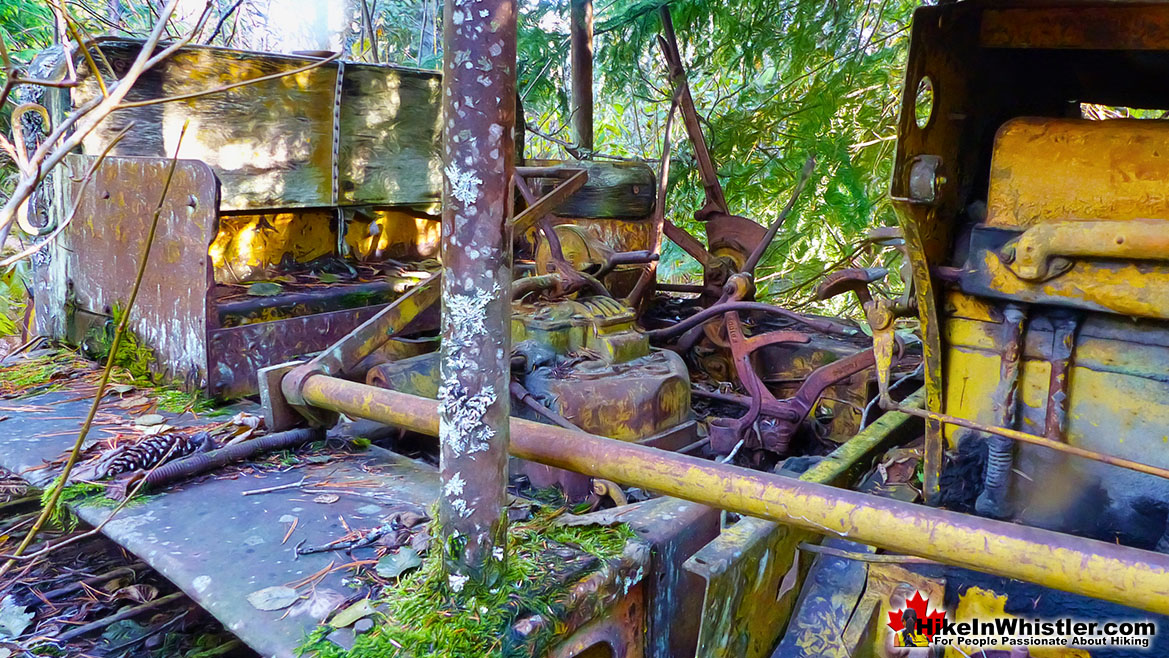
Caterpillar RD8 Video from 1938
This is a great video from 1938 of a young man starting and driving a Caterpillar RD8 tractor. The video even shows him hauling a tree which would have been one of the many jobs this one had in Parkhurst.
In the summer at just three metres away the old Parkhurst Caterpillar RD8 tractor is practically invisible, enveloped by the forest.
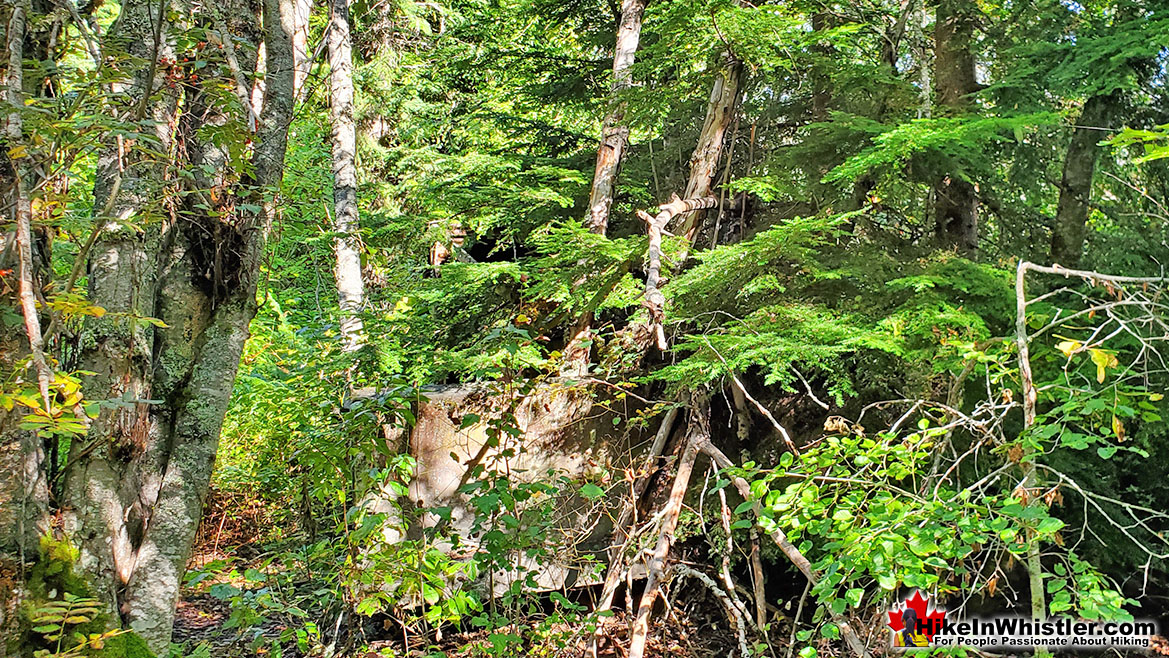
In the winter it is much easier to find, though you still have to do some bushwhacking to get to it. It sits in the forest about 10 metres from the train tracks on one side and about the same distance to the shore of Green Lake on the other side. From either side it remains invisible until you get much closer.
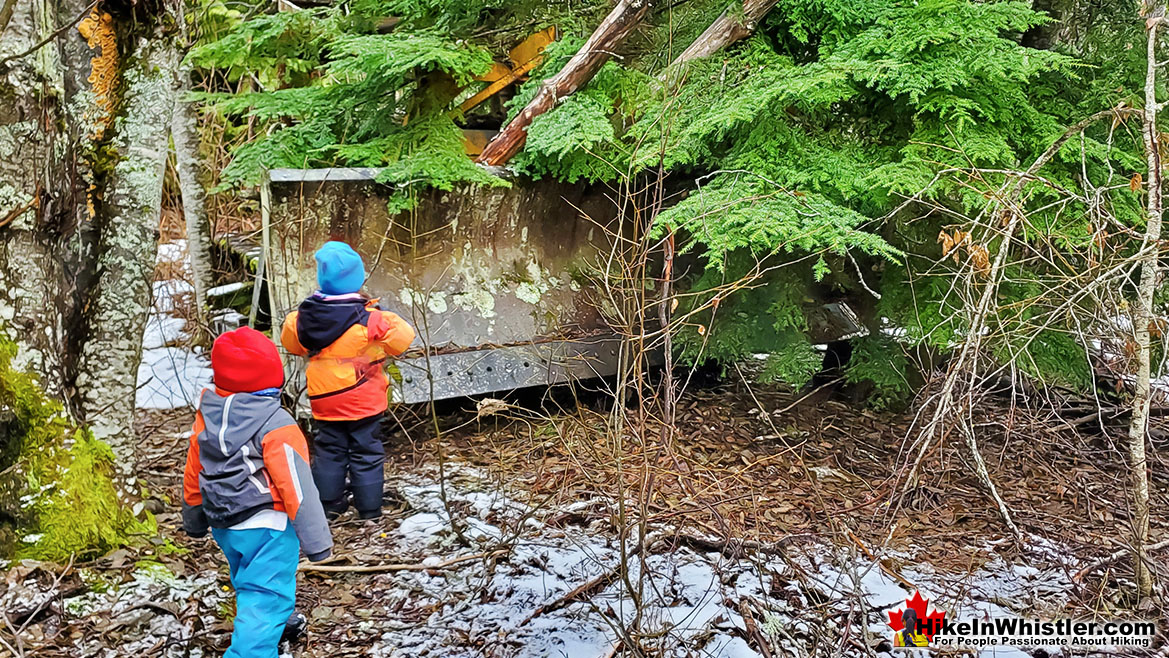
The hidden Parkhurst Caterpillar is fairly well intact after 65 years! The image on the bottom corner of the picture is from an original Caterpillar RD8 advertisement from the 1930's.
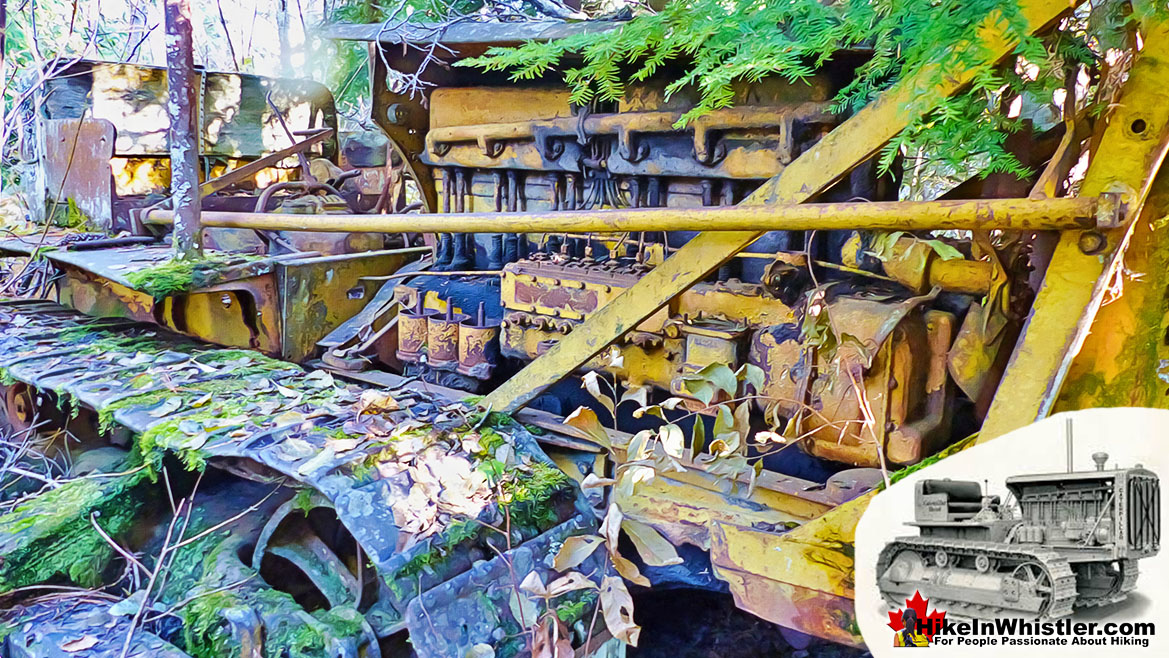
R.G. LeTourneau.Inc Peoria. ILL & Stockton, California
The massive plow lifted by the forest can be traced back to a company in California. According to the identification plate on the upper, right corner of the back side of the plow it was manufactured by R.G. LeTourneau.Inc Peoria. ILL & Stockton, California. The plate reads: BULLDOZER MODEL FK8 SERIAL NUMBER B3421FK8A. Robert Gilmour LeTourneau was a prolific inventor of earth moving equipment and his innovations revolutionized the industry. He patented nearly 300 designs and many were so advanced as to be considered decades ahead of their time. Most of the earth moving equipment and engineering vehicles in World War II were supplied by his factories.
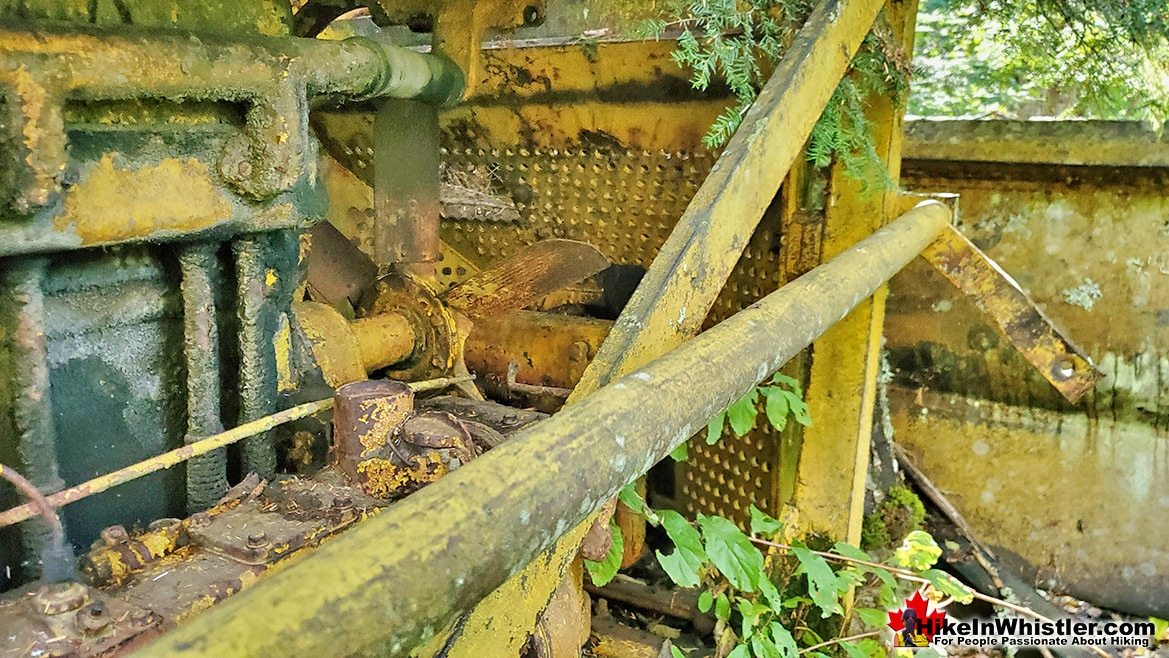
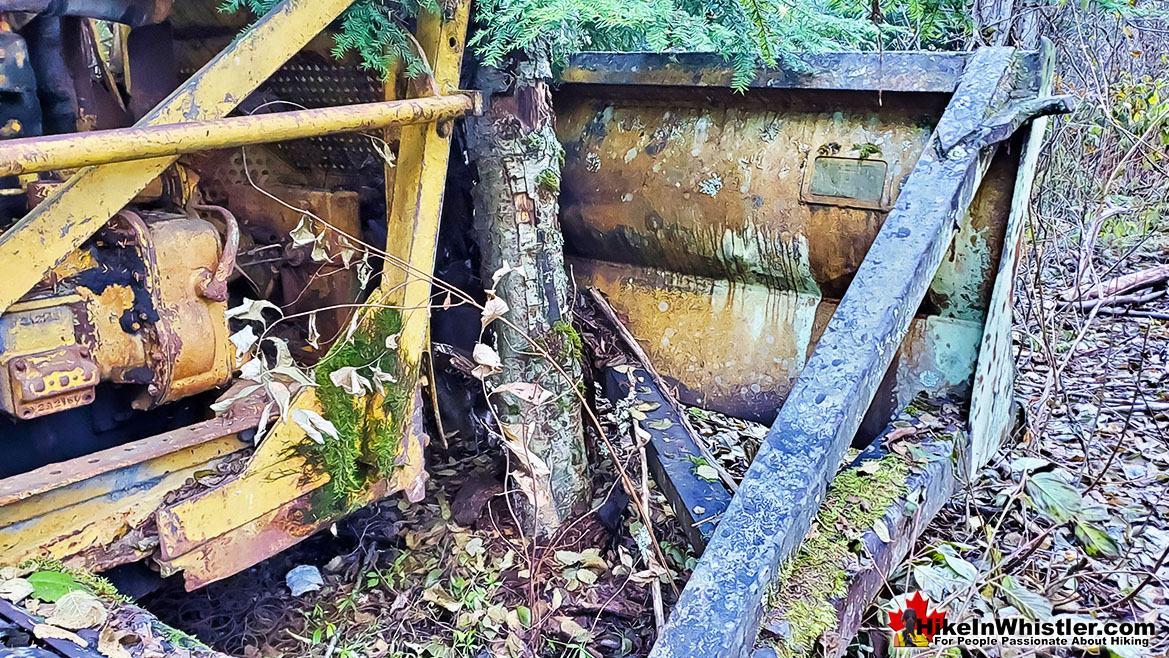
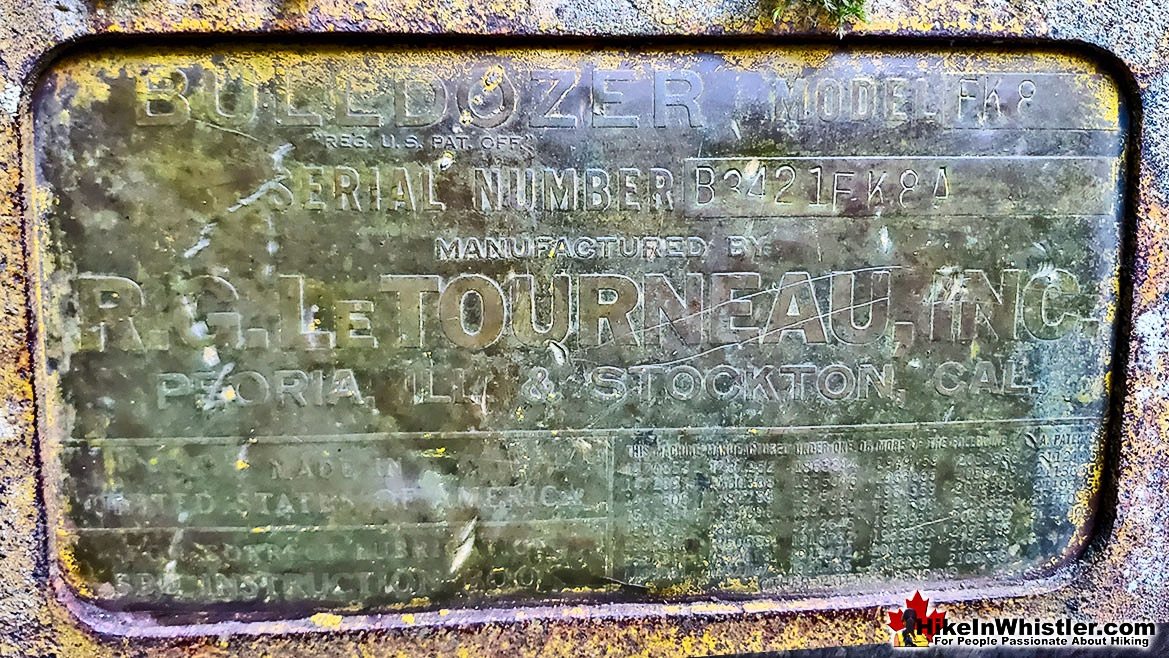
This is another very good video by NZ Contractor Magazine that highlights this type of tractor. It even shows how the plow functioned with the overhead cable system, nicknamed "headache racks". The Caterpillar RD8 in the video is also of the 1H series and also has a LeTourneau plow, though a slightly different model. The plow on the RD8 in Parkhurst is a LeTourneau FK8, whereas the plow in the video is a LeTourneau AK8
With the forest pushing in all directions the huge plow is rising off the forest floor by several trees. This plow weighs over 4000 kilograms and is being pushed upward by several trees that individually don't look very strong. It appears that they have the plow in a vice grip by growing on either side of the plow from underneath. The trees are growing at a slight angle away from the plow, then as the trees grow bigger and thicker the vice grip increases and so does the upward pressure.
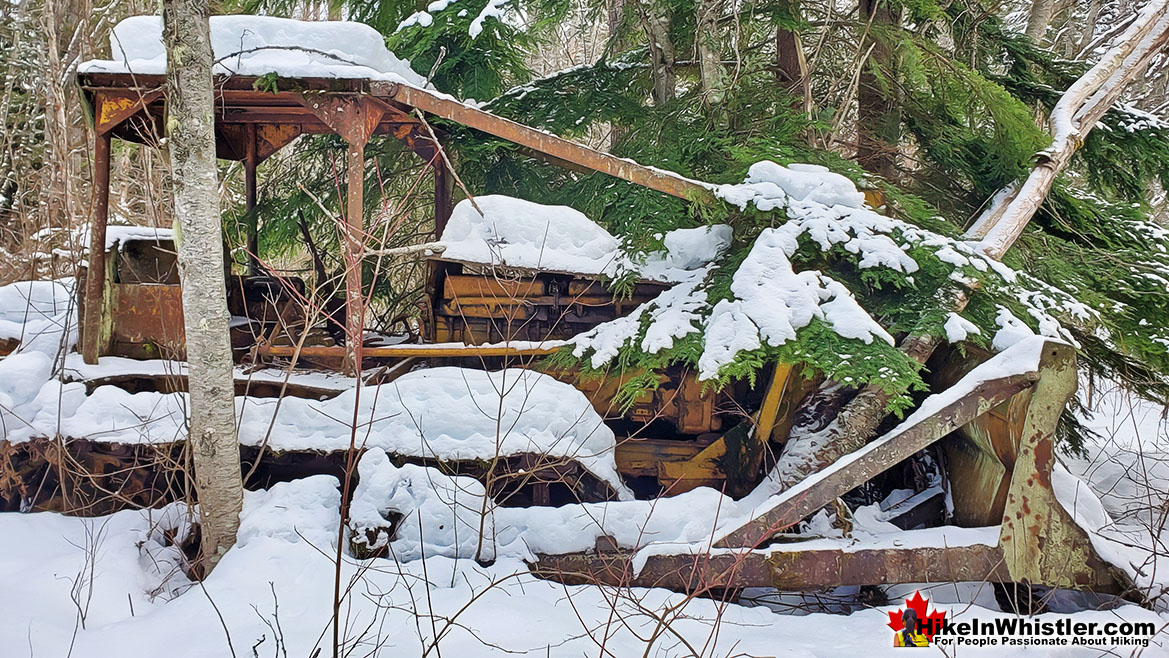
From the front of the plow you can't see any trees lifting the plow, but behind there are several as well as along the arms that attach to the tractor further down.
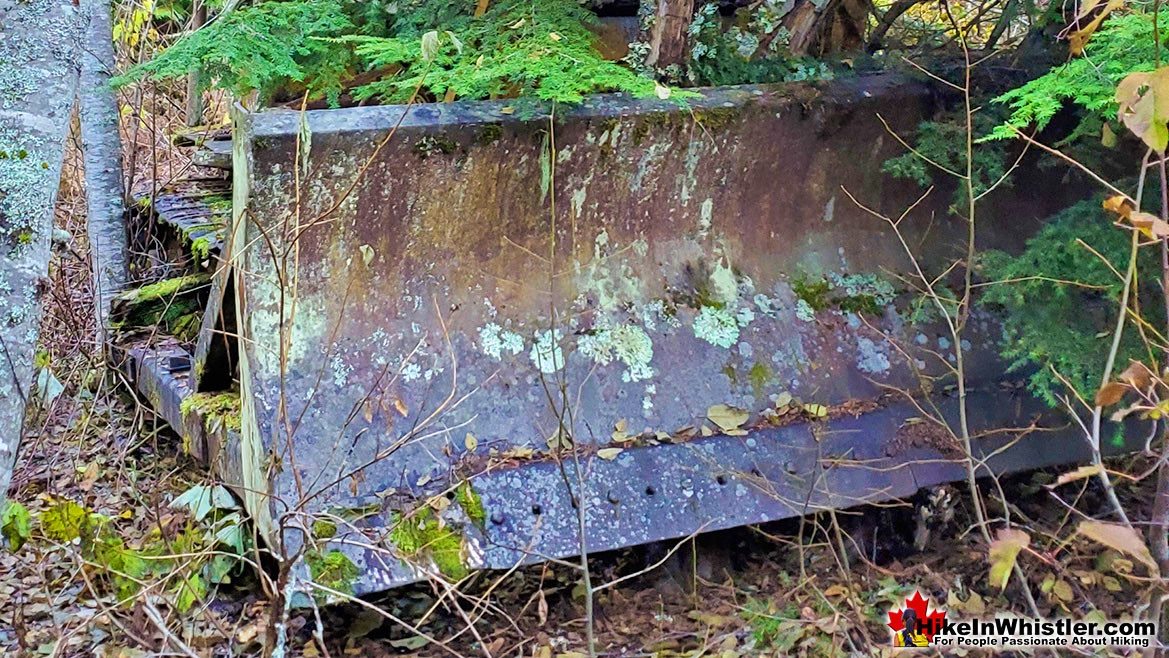
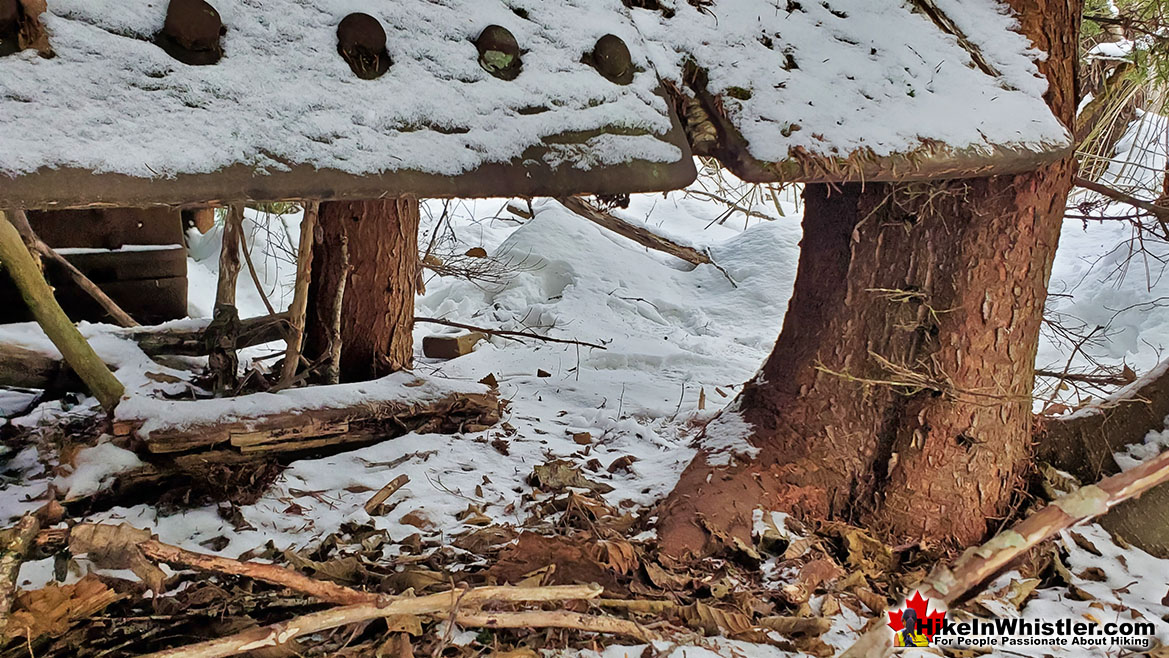
Underneath the plow at the front is where you can see the heavy lifting trees pushing in opposite directions, but all are pushing upward. It is still hard to believe that trees can lift something this heavy and you find yourself crawling around in the dirt mystified at how it could be possible.
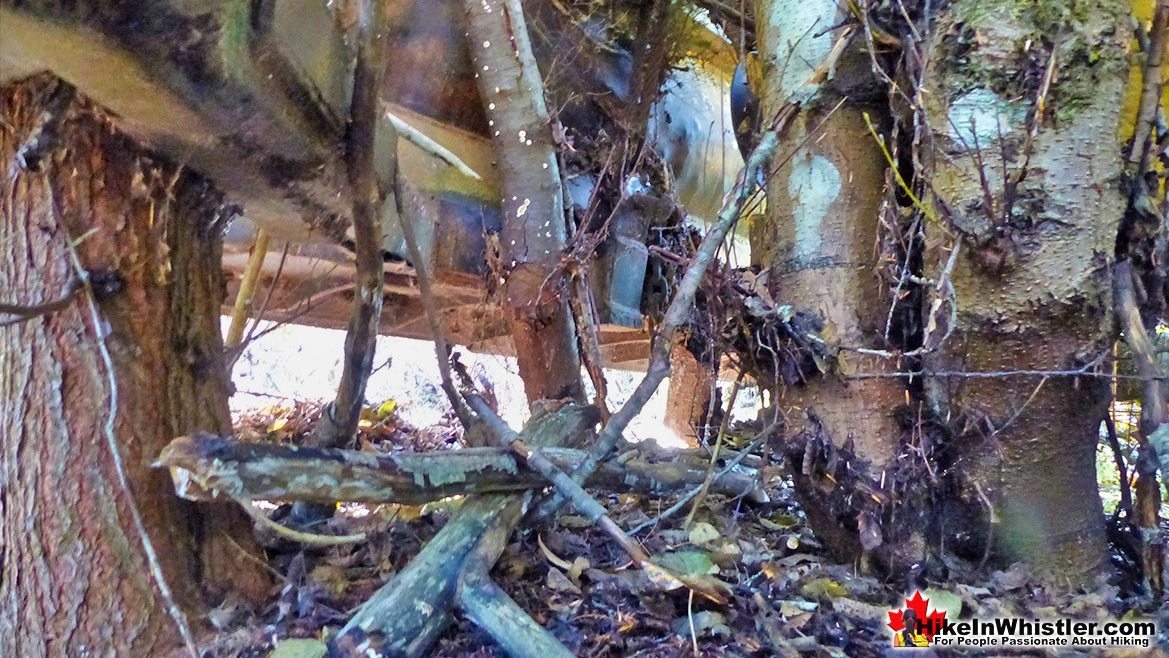
One remarkable thing that you can't help but wonder is how high will these trees be able to lift a 4 ton plow. The trees are mostly still young, fast growing and it appears they are just getting started. It also seems quite probable that the slowest and hardest part of this process is lifting it the first few centimetres. Now that the plow is off the ground more trees can grow underneath where previously they could not. It seems likely that this amazing plow could rise a lot more and faster by the year.
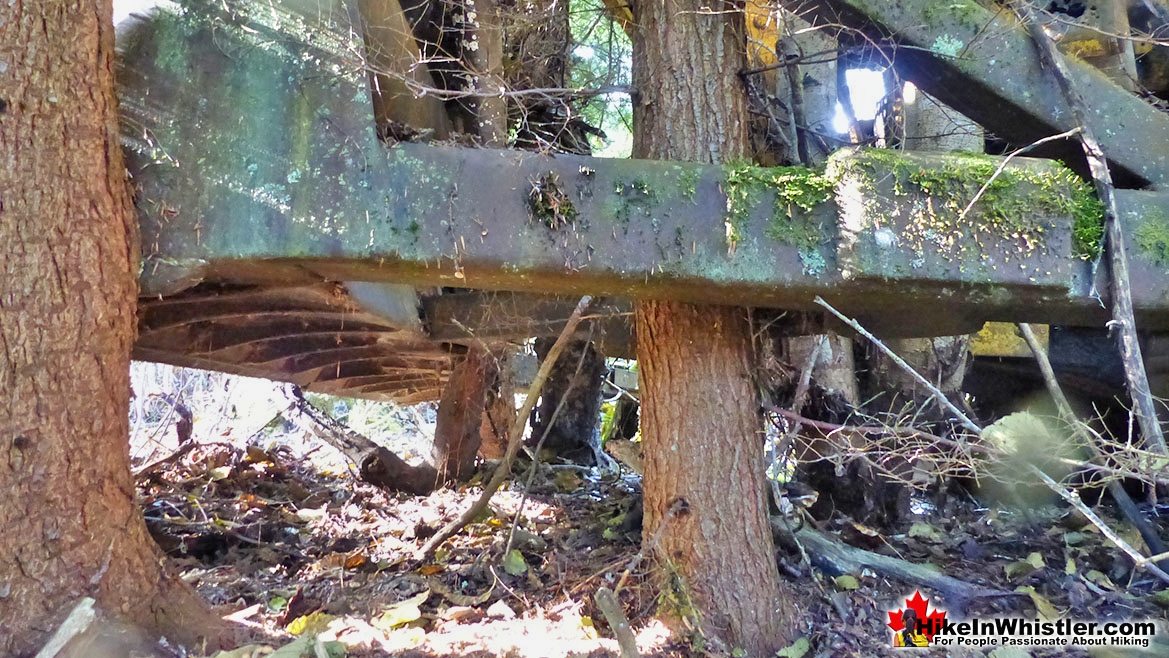
The picture below show the vice grip of the two trees on either side of the plow. Both trees will continue to grow thicker trunks and the upward pressure must be considerable. Notice how this side of the plow is much higher than the other side.
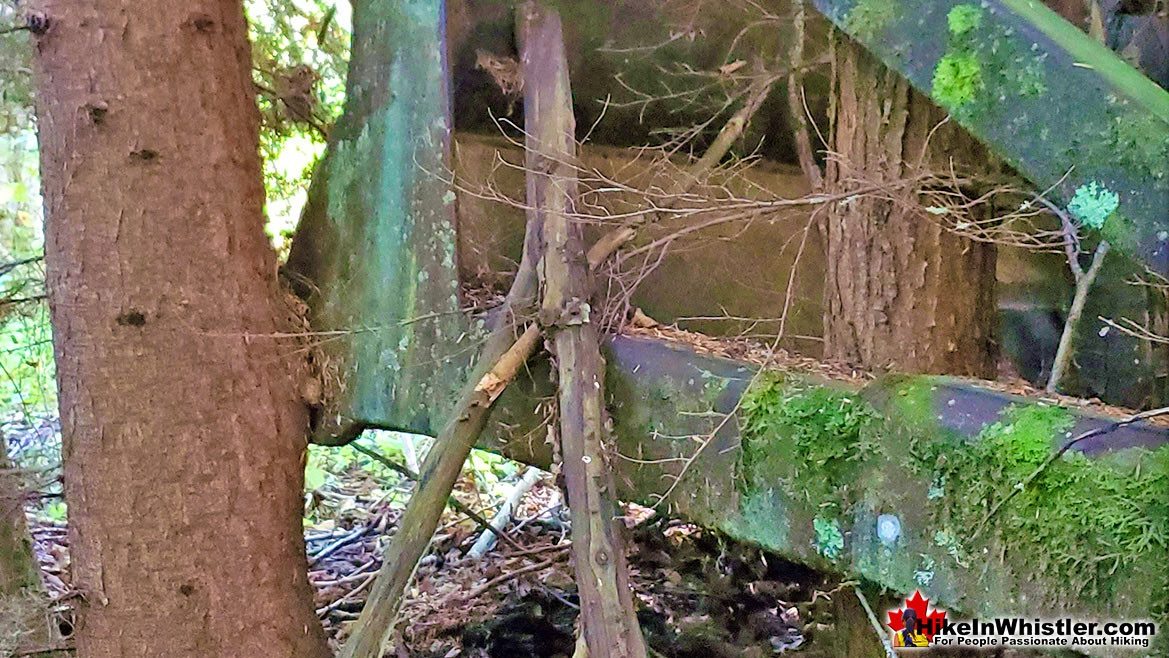
The big tree on the left is on the outside of the plow whereas the smaller tree on the right is wedged between the plow, the tractor and another tree.
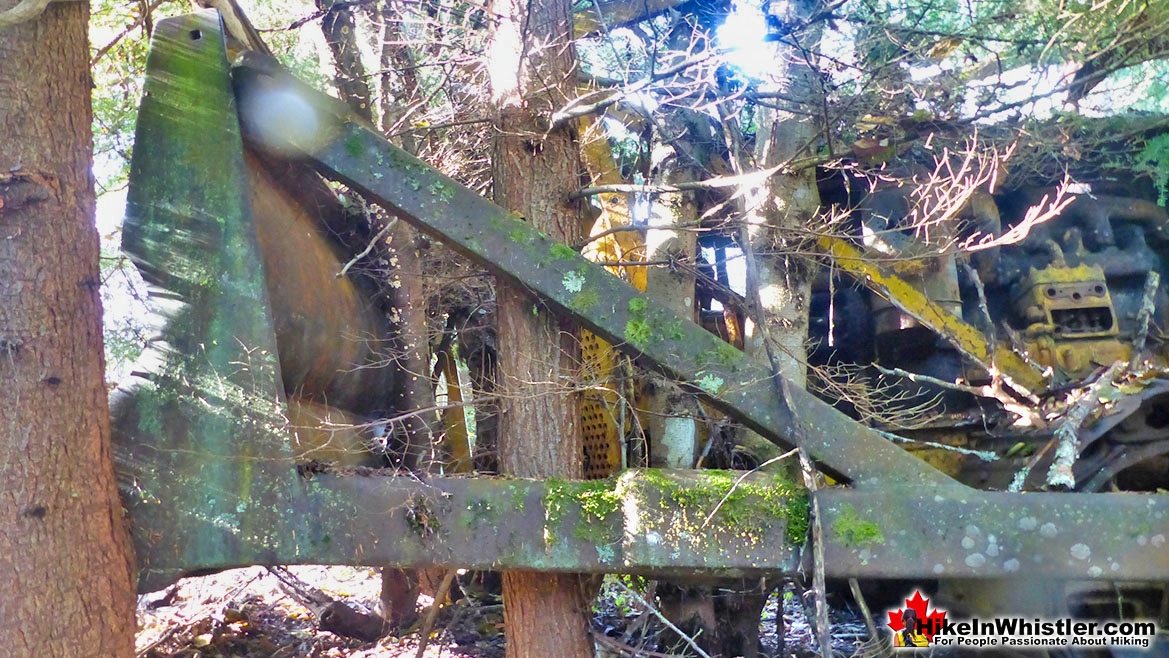
The Parkhurst Plow Tree
Just a couple metres from the Caterpillar RD8 and its rising plow is another interesting plow and forest battle going on. This time, so far at least, the plow is winning. A large tree, likely started growing when the plow was abandoned here in 1956, is growing through a large, triangular opening. Squeezed through the gap the tree then widens considerably once above the plow and continued up as if a completely normal tree. You find yourself circling the plow and tree marvelling at how it has filled every gap in the plow, fighting for room to move and grow.
It is interesting that when looking at the Plow Tree you can't help notice that the Caterpillar is completely concealed by the forest just a couple metres away. One of the plow's arms is almost touching the Caterpillar's tracks and yet standing beside the plow you can't see through the forest enough to make out a huge, antique Caterpillar tractor! Makes you wonder what else you have not found in Parkhurst Ghost Town. Notice in the picture above with the two kids, you just make out the shadow of the big tractor in the background and this is when the trees have no leaves. In the summer months it would be completely hidden.
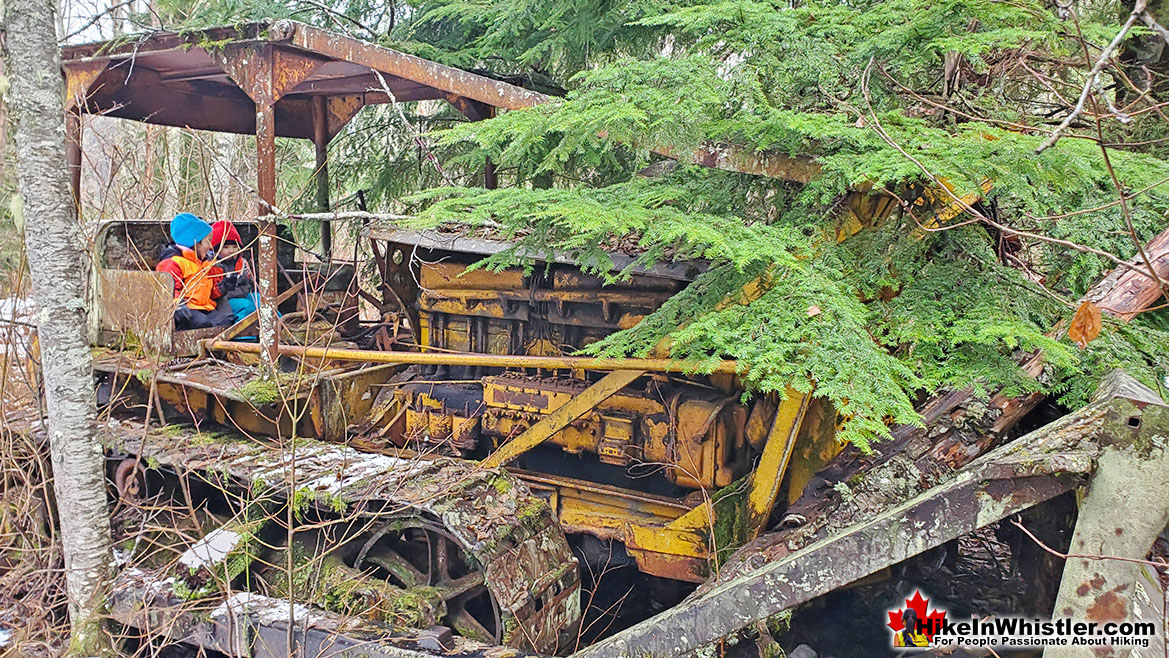
Parkhurst Ghost Town Sawmill
The Parkhurst Ghost Town sawmill area is where you will find the old 1936 Caterpillar RD8 logging tractor. The sawmill operated on the triangle of land that juts out into Green Lake and also extended along the shore between the train tracks and the water. The old sawmill was almost certainly crushed under heavy snow shortly after its closure in 1956. With the town abandoned there were no caretakers to maintain any of the old structures and the crushing weight of spring snow eventually flattened all but two of the old houses and the old sawmill. Today, when you wander around where the old sawmill was you will notice a strange lack of trees growing in certain areas. After a bit of poking around you realized that under the forest floor layer of dirt, moss and grass are huge sheets of metal that once covered the roof of the Parkhurst Sawmill. Some of these can still be seen where there once was a covered area over train tracks that branched off from the railway we see today and extended to the sawmill near the end of the point of land. With some digging you may uncover the old train tracks under all the collapsed debris, but it seems likely that the tracks were removed and salvaged. The giant steel chimney from the sawmill is still easy to find sprawled across the forest floor in a few pieces. The brick building that housed the furnace is now a pile of bricks crumbling around the old furnace. Also in the forest you will encounter yet another abandoned tractor. An old Cletrac tractor, similar to the the Caterpillar, but smaller and lacking an enormous plow. Both antique tractors are wonderfully wrapped in the fast-growing forest.
Parkhurst Ghost Town
Parkhurst Ghost Town is a beautiful and comparatively quiet place to hike in Whistler. An ever increasing network of hiking and biking trails over the years have made it quite an accessible place to get to from either the Sea to Sky Trail/Green Lake Loop from Lost Lake near Whistler Village or via the Parkhurst Trail at the far end of Green Lake. A short drive from Whistler Village along the Sea to Sky Highway past the north end of Green Lake takes you to the trailhead for the Parkhurst Trail and the short hike to Parkhurst. The highlights of Parkhurst Ghost Town are not just the interesting old relics of the abandoned town, but the gorgeous views of Green Lake from several places along the Parkhurst Ridge Trail.
More Information, Maps & Images of Parkhurst Ghost Town
More Whistler & Garibaldi Park Hiking A to Z!
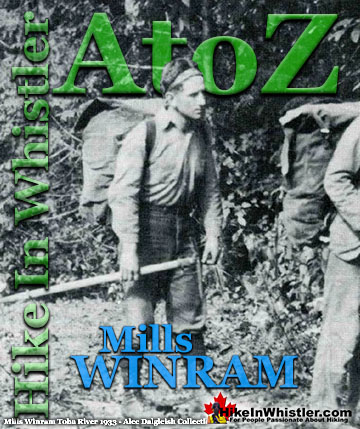
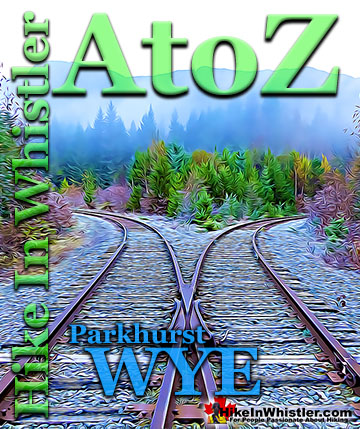
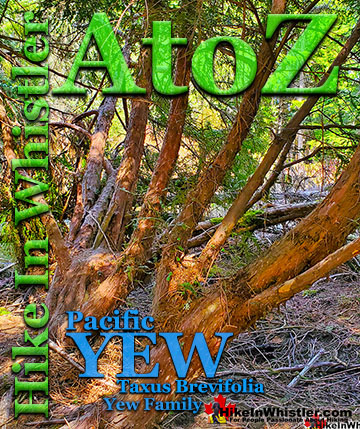
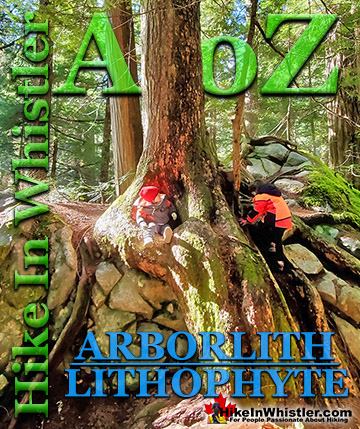
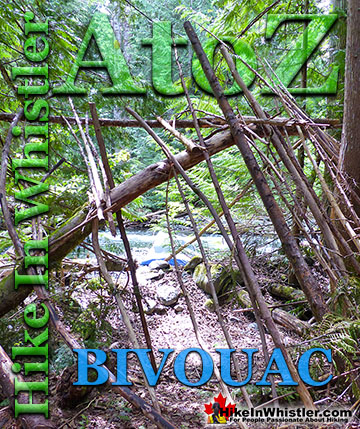

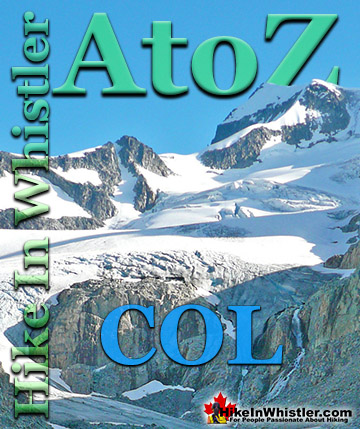
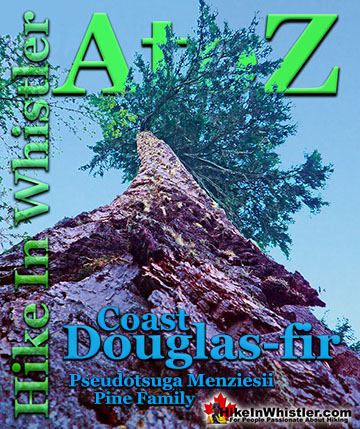
The Best Whistler & Garibaldi Park Hiking Trails!

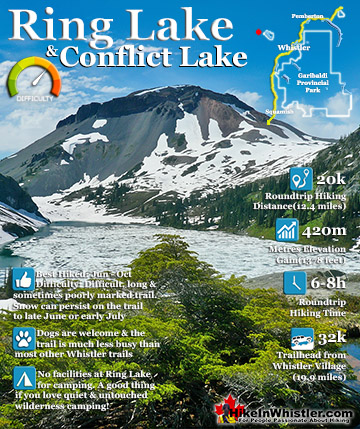
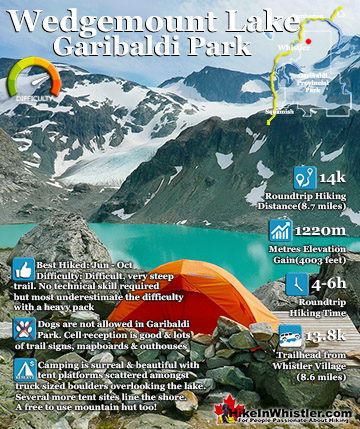
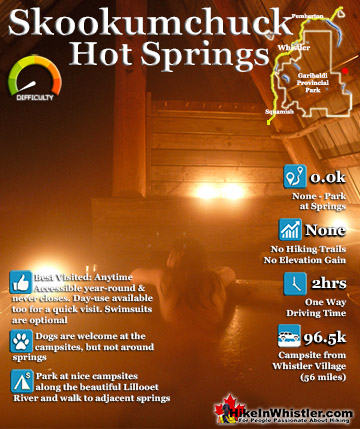
Whistler & Garibaldi Park Best Hiking by Month!
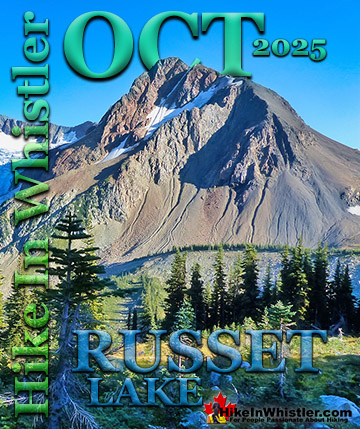

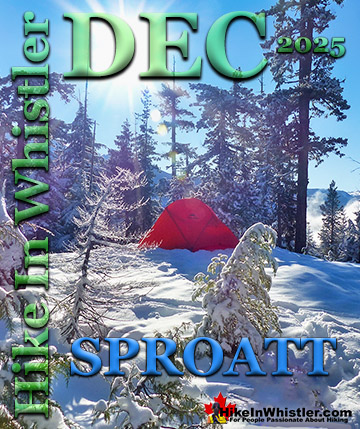

Explore BC Hiking Destinations!

Whistler Hiking Trails

Squamish Hiking Trails
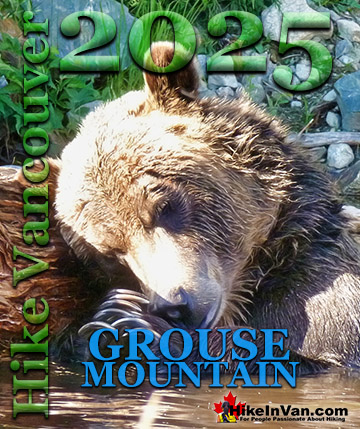
Vancouver Hiking Trails
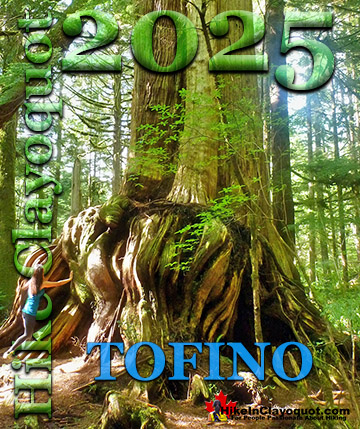
Clayoquot Hiking Trails

Victoria Hiking Trails


